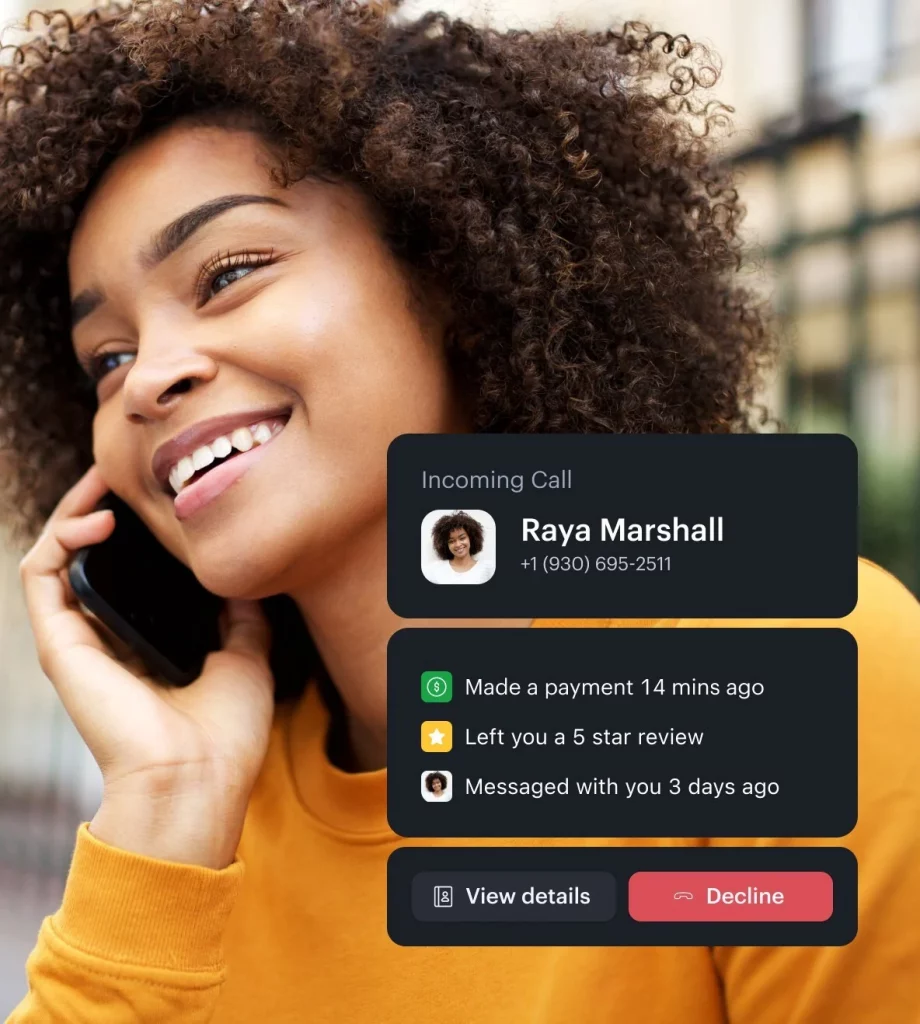Call Forwarding vs. Routing—What’s the Difference?
Though we’re in the midst of a digital revolution, phone calls keep coming—and taking up precious time. You may find yourself wondering how your local business should navigate phone call options to make the process as efficient as possible (for both you and your customers).

The Power of a Good Phone Call
Good communication is at the heart of a thriving business. Having an efficient phone system in place can make a major impact on your business.
Research shows that customers’ likelihood to make a purchase is based on the entirety of their customer experience. Customer experience is the fundamental driver of loyalty. When your customers have a good experience, they are far more likely to buy from you. In this way, a phone call with a customer is so much more than just a call; it’s an opportunity to build ease and connection into your customers’ experience, which leads to increased revenue for your business.
So, what is the best way to create a great phone experience for your customers? It all starts with selecting the right call-routing strategies for your team. Managing incoming calls helps get your customer to the right person for their problem, faster.
What is Call Forwarding?
Call forwarding is a phone management feature that will redirect incoming calls to an alternative phone number on a set condition that you determine. For example, calls may be forwarded if they come from a blocked number, if they come outside of business hours, if the line is busy, or if the call isn’t picked up within a certain amount of time.
This feature is really useful in work environments where a lot of people could answer most customers’ questions. When one employee is not available, the call is automatically sent to someone else’s phone. This system makes it faster and easier for your team to answer calls, increasing productivity and creating happy customers.
Benefits of Call Forwarding
Nothing guarantees customer disappointment like a missed call. And since existing customers are 60-70% more likely to buy from you, your business really can’t afford not to pick up—you need to keep those existing relationships strong.
The primary benefit of call forwarding can be summed up in one word: Availability. Call forwarding simply allows your business to pick up more customer calls—whether you’re on the clock, it’s after hours, or you’ve quickly stepped out of the office. This can also cut down on overhead costs if you choose not to rent office space. With more teams choosing to work remotely, you can maximize your budget and delight employees by allowing them to receive work calls on their devices wherever they are.
Companies that create exceptional customer experiences set themselves apart from their competitors. By picking up every call, your business can build a stronger relationship with customers and establish a brand reputation of responsiveness and reliability. Word of mouth is the most powerful form of marketing, and if you have happy customers, they’re sure to spread the word about your business.
Call forwarding can also massively boost internal productivity, especially in a call center environment. If a caller dials a specific number for a team member who’s already on the phone with a different customer, and their call is subsequently dropped or sent to voicemail, this costs time both for the customer (who has to call back later) and the team member (who has to return their voicemail).
What is Call Routing?
Call routing is a phone management feature that puts inbound phone calls in a queue and sends them to specific team members based on predetermined criteria that you set. A call routing system is also sometimes referred to as an automatic call distribution (ACD) system.
There are 3 phases to the call routing process:
- Caller Input: Callers use their dial pad or voice to respond to prompts from the ACD system. (For example, the system might prompt something like, “Press 3 to speak with the tech department.”)
- Call Queueing: Based on input the caller provides, the call routing system will automatically put calls into the correct queue.
- Call Distribution: Callers are finally routed to the team member who is best equipped to address their issue.
Criteria for routing calls to the right team member can vary. You might route calls via the following sets of criteria:
- Skills-Based: Callers are routed to the team member most qualified to help with their specific issue.
- Time-Based: Callers are routed to the team member most likely to pick up (usually based on their schedule or time zone).
- Predictive: AI routes callers based on caller history, preferred communication channel, profile of behavior history, etc.
- Round Robin: Callers are routed to whichever team member’s “turn” is next.
- Relationship-Based: Callers are routed to a team member they’ve spoken with before. Customers who are considered VIPs are routed to specific team members.
Benefits of Call Routing
People are busy—that includes you, your team, and your customers. When you route incoming calls to the right person, you boost customers’ confidence in your team’s expertise by making sure their concerns are addressed quickly and appropriately. Reducing wait times and helping callers get faster resolutions to their issues is a no-brainer way to build more convenience into your customers’ overall experience.
Making sure every call is answered by the right person also saves your team a ton of time—it reduces the likelihood that they’ll waste time on a call they weren’t qualified to answer in the first place.
Customers want clear, consistent communication, and call routing is an easily implementable solution for your business phone system.

Why Quick and Productive Calls Matter
In simple terms, missed calls lead to lost customers. Businesses that are serious about beating out competitors understand just how important it is to take calls quickly and effectively.
Lengthy wait times, the inability to get the right answer to an issue, and obstacles to reaching the right team member all lead to upset customers who are more likely to take their business to your competitors or leave a bad review that impacts your company reputation.
Customers are the lifeblood of a business, and being responsive and efficient with your callers will make a huge difference in customer retention thanks to a good experience.

Make Every Call Count with Podium Phones
Ready to centralize all of your call and message data? Give your customers a better experience with Podium Phones. With Voice, you’ll never miss a lead, offer all your customers a single number to contact, and get relevant customer information to your team members before they answer a customer’s call. Learn more here.
Get started today
Ready to grow? Scale your business with an AI-powered lead conversion platform.







